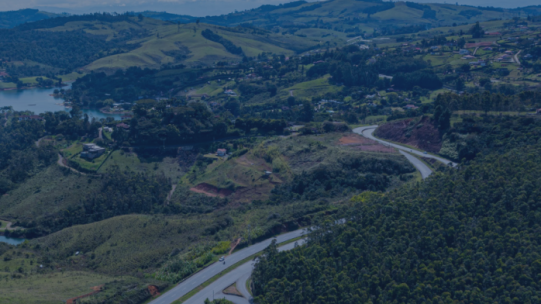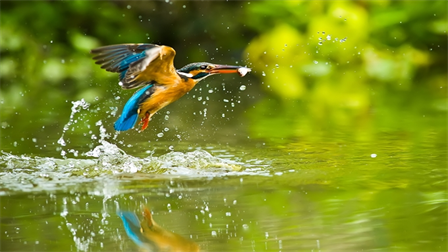Sacyr: Pioneering Sustainable Infrastructure through Natural Capital Initiatives
Start Reading

1. Company at a Glance
In this case, we will discover how Sacyr, a global infrastructure company, is advancing sustainability through the integration of natural capital into its operations. By developing its own measurement methodology, aligning with international frameworks, and fostering cross-functional collaboration, Sacyr is addressing complex environmental challenges such as biodiversity loss and ecosystem degradation.
Infrastructure
Industry
1986
Founded
Spain
Headquarters
+15,000
Number of Employees
More than 15 countries on four continents
Global Presence
2. The Challenge
Sacyr implemented this good practice to ensure compliance with environmental laws across all countries where it operates, while strengthening its role in environmental stewardship. In 2021, it conducted a materiality analysis to identify the most relevant ecosystem services linked to its infrastructure activities, allowing the company to focus efforts where its impact is most significant.
A major challenge was the complexity of measuring nature’s impacts and dependencies, due to its multiple dimensions and the lack of standardized metrics and data. To address this, Sacyr developed its own methodology to calculate its natural capital balance, a framework that evaluates how the company depends on and impacts natural resources such as water, soil and biodiversity, helping to identify related risks and business opportunities.
These efforts are part of its 2024–2027 Sustainable Roadmap and the Strategic Natural Capital Program, which aims to:
- Include biodiversity conservation in 100% of new contracts
- Develop a natural capital roadmap
- Roll out an internal tool aligned with the EU Taxonomy principle of “do no significant harm.”
3. The Action
Actions taken by Sacyr in developing sustainable practices.
Impact, Risks and Opportunities Management
Since 2020, Sacyr has been enhancing how to measure, manage and report the impact of its operations on natural capital. The initial step was a materiality assessment, identifying the 20 most critical ecosystem services tied to their activities, with many linked to land use changes and environmental regulation dependencies. In the next phase, Sacyr assigned specific measurement units to each identified service and developed a robust methodology tailored to their project types to assess the natural capital balance.
Scaling Nature Impact Tracking Through a Digital Tool
Sacyr, in collaboration with its technology partner NBI, developed a digital platform called Natural Value Performance (NVP) to automate and scale the measurement of environmental impact across projects worldwide. This web-based tool uses global satellite data to calculate and monitor natural capital balance, helping the company understand its impact on nature and make informed decisions. NVP is recognized by the Taskforce on Nature-related Financial Disclosures (TNFD) as a recommended tool. Within Sacyr, natural capital experts from the Quality, Environment and Energy department are responsible for uploading project data and sharing results with project teams to support decision-making and drive progress toward nature-positive outcomes.
Aligning With Global Standards
Sacyr aligned its sustainability reporting with international frameworks, particularly the TNFD. It applied the LEAP approach to assess risks and opportunities related to natural ecosystems, helping anticipate and manage environmental vulnerabilities across project locations.
Creating a Biodiversity and Natural Capital Committee
In 2022, Sacyr established a company-wide Biodiversity and Natural Capital Committee to oversee initiatives and outcomes related to biodiversity across all projects worldwide. Framed within the Quality and Environment Committee, it is led by the Corporate General Manager and includes environmental experts from different business units.
The committee meets quarterly to review progress, analyze legislative aspects and market trends, and foster cross-project collaboration and learning. Its main objective is to strengthen actions related to natural capital as outlined in the Sacyr Sustainable Plan 2025–2027, ensuring the proper implementation of the company’s Quality and Environment Policy and Biodiversity Policy.
Public Advocacy
Sacyr has actively contributed to the development of global nature-related reporting frameworks by providing feedback on various drafts of the TNFD framework. In addition, the company is engaged in national and international biodiversity networks, including Fundación Biodiversidad, the Natural Capital Factory and Business@Biodiversity, among others.
4. Overcoming Barriers
Lack of standardized metrics and frameworks to measure natural capital across projects: Sacyr developed its own internal methodology focused on 20 material ecosystem services.
Difficulty in automating and scaling impact assessments across geographies. As an international company with highly diversified business lines, automating the calculation of its overall impact is complex. Sacyr developed a digital platform to enable automatic and scalable measurement. The project was supported by the technology team and data experts and approved by the Corporate Director, which allowed it to move forward.
Limited data and challenges in defining ecosystem boundaries, including hidden biodiversity: Sacyr promoted internal collaboration through the Biodiversity and Natural Capital Committee to share expertise and address knowledge gaps.
Complexity in measuring nature impacts, due to its multidimensional nature: The company applied the TNFD’s LEAP framework and conducted a materiality analysis to prioritize what to measure.
5. Impacts & Results
First Half of 2025 Outcomes: 1,815 ha offset, 89,010 plants planted, and 190 ha restored and safeguarded.
Nine infrastructure projects were integrated into the NVP tool, improving decision-making in projects with significant ecosystem interaction.
A positive net natural capital balance was achieved in the Pamplona–Cúcuta (Colombia) project through offsetting measures that reversed construction-related degradation.
125+ European environmental requirements successfully addressed thanks to enhanced environmental assessment capabilities.
Increased eligibility for public tenders requiring detailed nature-related impact and dependency data.
Improved performance in sustainability indices and investor ratings due to strong nature management practices.
Knowledge sharing through public documents, sectoral events, and internal initiatives, positioning Sacyr as a reference in biodiversity and natural capital management.
6. Key Lessons Learned
Focus on what matters most:
Sustainable impact requires integrating gender equality into business objectives.
Identify and address knowledge gaps:
Creating a georeferenced database of projects revealed information gaps and improved understanding of biodiversity conditions at each location.
Cross-departmental collaboration is critical:
Collaboration between various departments has helped Sacyr evolve in its commitment to nature and advance in measuring its impact.
Transparency adds value:
Reporting through recognized frameworks (e.g., S&P, CDP, Ecovadis, FTSE) enhances stakeholder trust and accountability.
"Our next steps focus on scaling up our measurement tool through satellite imagery and deepening our analysis of nature-related risks and opportunities. Advancing on these fronts will allow us to define a transparent and actionable strategy aligned with our capacity to deliver meaningful impact.”
Claudia Pérez, Environmental Specialist, Sacyr
7. Resources
Sacyr is a participant of the UN Global Compact since 2019, including:
Participant of the Target Gender Equality Accelerator
Business and Human Rights Accelerator Participant
Signatory of Forward Faster in most of the targets
Recommended UN Global Compact resources available to support your journey:
Disclaimer: This case example is intended strictly for learning purposes and does not constitute an endorsement of the individual companies by the UN Global Compact.

